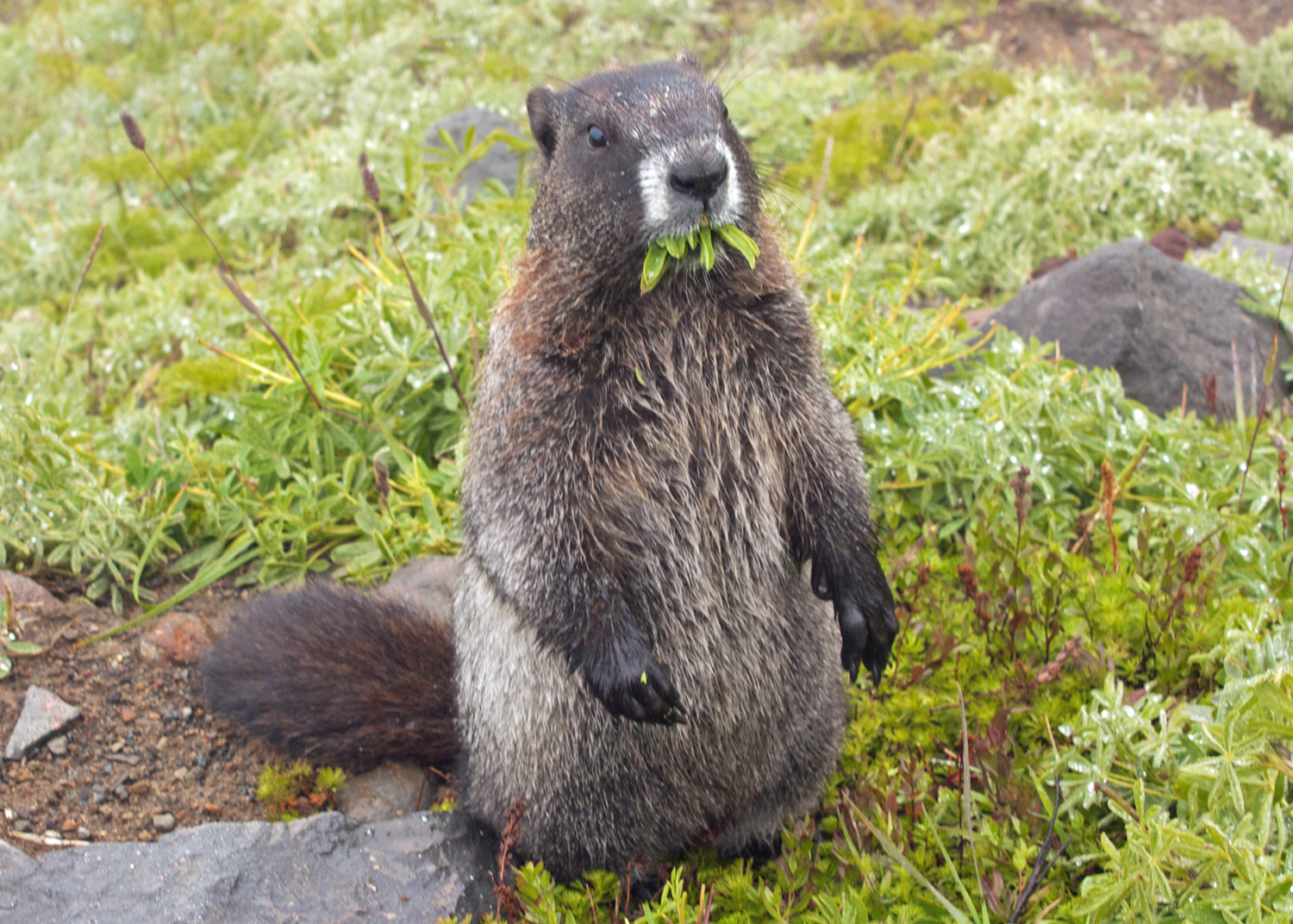Mount Rainier National Park
Located: Washington - Established: March 2, 1899
The Park: Although it hasn’t erupted for the past 150 years, Mt. Rainier is still considered an “active volcano.” Towering 14,410 feet above nearby Seattle, Rainier is considered one of the world’s most dangerous volcanoes and is noted to be the most prominent peak of the Cascade Mountain Range.
Open year round, Rainier offers abundant opportunities to play in the great outdoors. The summer months of July and August are generally sunny and mild while heavy winter snowfall lasts from November thru April.
The twenty-six major glaciers located on Mt. Rainier make it the most glaciated peak in North America. Paradise, one of the park’s five developed areas, is famous for its breathtaking views and glorious wildflower meadows. At 5,400’, Paradise receives an average of 54 feet of snow annually making it one of the snowiest places on earth!
Mt. Rainier from 20,000 feet
Getting there: Mt. Rainier is located approximately 80 miles southeast of Tacoma, WA and is accessible via four entry points.
When to go: If visiting Rainier in the winter, be sure to pack your snow chains as this mountain receives an average of over 600 inches of snowfall each winter at the 5400-foot elevation. The only road open during the winter months is the section between the Nisqually Entrance and Paradise. If visiting in the summer, be sure arrive early as parking can be nearly impossible to find on a sunny day! Parking lots fill up quickly!
What to do: Rainier offers a plethora of outdoor opportunities! The subalpine meadows during the summer months will treat you to a dazzling display of wildflowers. Biking, fishing, boating and climbing will keep even the heartiest busy.
Hiking Rainier. For the super-hearty with plenty of time, the Wonderland Trail is 93 miles long and completely encircles Rainier. However, this trail receives a staggering number of reservation requests each year - many more than the trail will handle.
Rainier from 6500'
For the rest of us, Rainier has over 260 miles of maintained trails to trek about on a daily basis. A great day hike in the Paradise region is the Skyline Trail. The 5.5-mile loop trail climbs 1700 feet up to Panorama Point before looping back to the Paradise Inn.
Where to stay: Mt. Rainier has three developed campgrounds with over 500 campsites available for both RVers and tent campers.
Rainier also hosts two lodges within park boundaries. Paradise Inn is one of the classic Great Lodges of the National Parks. Built in 1916, this historic Lodge has 121 guest rooms and is open mid-May thru early October.
The National Park Inn, located in the Longmire Historic District, is open year round operating with 25 guest rooms and a full service dining room.
Marmot munching local grasses
Wildlife: Along the trails in the Paradise section of the park, you will most likely happen upon numerous Hoary Marmots– furry little creatures who are not afraid to pose for pictures! They are also known to whistle as you approach them.
Park visit #18.
Memorable moment: Hiking the Skyline Trail up to Panorama Point.
Trivia: At the summit of Mt. Rainier, there exists an otherworldly grotto of ice caves that could very well be the Pacific Northwest’s least known natural wonder. The ice caves atop Mr. Rainier formed as heat rising from the volcanic cauldron below melts the ice pack leaving a labyrinth of icy tunnels.
Banner: Trail to Panorama Point
Experience these Check List:
- Stop by any of the park's three Visitor Centers
- Explore the Longmire Museum
- Take in the splendor of the wildflower bloom
- Take a Day Hike...or three!
- Hike up to Panorama Point
- Shoot a Marmot (with your camera)





